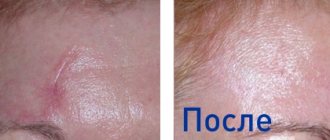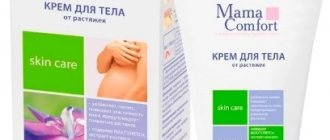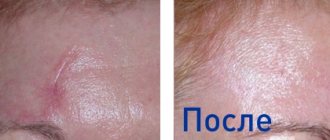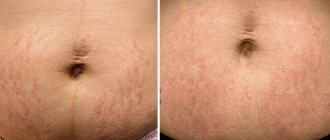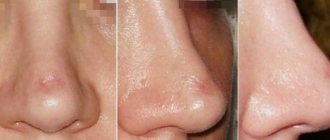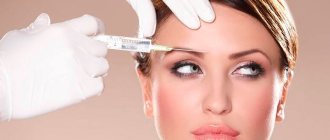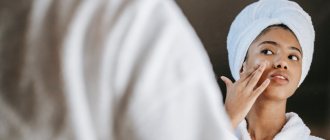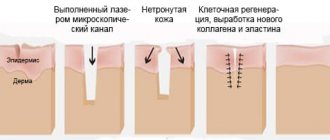Scars do not decorate - this has long been proven by fashion and beauty standards. Fortunately, there are techniques that can help you get rid of unsightly marks on the skin that appear as a consequence of acne, surgical removal of a wart, inflammation or sudden weight loss. The reason for their occurrence is a violation of collagen synthesis and, as a result, the development of connective tissue deficiency in the area of damage to the skin. Removal of atrophic scars is one of the most popular procedures in modern cosmetic medicine. Using various correction methods, the doctor will not remove the defect completely, but will make it minimally noticeable.
Where do scars come from?
Scar formations occur where the skin is damaged. The causes of damage can be different - trauma (wounds, deep scratches), surgical interventions, inflammation, burns. The result is the same - the integrity of the skin is violated.
The body strives to quickly correct the situation and restore damaged tissue. The production of collagen and elastin fibers increases, and the wound heals. The resulting scar consists of connective tissue, which differs from the surrounding tissues in its greater density and less elasticity. There are no sweat glands or hair follicles, and the formation feels harder to the touch than the surrounding epidermis.
The color of the formation may also differ from the shade of the surrounding skin. As a rule, fresh defects have a purple, bluish, or red tint. They usually fade over time.
Few people manage to live their lives without a single injury, so over time, scar formation appears in everyone. However, if previously such defects were special signs that remained with a person forever, now cosmetologists are able to remove scars, returning the epidermis to its original smoothness.
Scar mesotherapy
Doctor: Kwak Yu.V.
A high-tech biomaterial, type I collagen with a completely preserved native structure, COLLOST® stimulates the process of targeted tissue regeneration in the scar area. Under the influence of COLLOST® gel, the process of producing your own collagen fibers and replacing pathological scar tissue with healthy ones is activated. Collostotherapy makes skin defects invisible.
The course consists of 3-5 procedures with an interval of 2 weeks. Perfectly combined with laser resurfacing.
The cost of one procedure is 10,000 rubles.
Types of scar formations
There is no fundamental difference between scars and scars - they are synonyms. In medicine, there are such defects called scars, popularly scars.
But the differences between types of scars are quite definite. There are 4 types of such defects:
- Normotrophic scarring are flush with the surrounding skin. They may differ slightly in color from the epidermis or merge with it. This is the most successful outcome of wound healing - practically without traces. Normally, this is how scars should heal;
- Atrophic scars - retracted, sunken. As a rule, the skin over them is thin, flabby, with wrinkles, and lighter than in other places. Such defects often occur in areas with thin, dry skin, at the site of ulcers and acne (post-acne), etc.;
- Hypertrophic scars, on the contrary, rise above the level of the epidermis. They may be thick, firm, lumpy, with a shiny or flaky surface, ranging in color from pale pink to purple. Important: such defects never spread beyond the initial damage, do not hurt, do not itch or cause any physical discomfort. Psychological discomfort can be significant, especially if the defect forms in a visible place or is visible from under clothing. Such scars grow for 2 years, then slow down their growth and begin to fade over time, from bluish-red to white;
- Keloid scars. This is the most unpleasant variety. Unlike ordinary hypertrophic scars, they not only follow the contours of the original damage, but also grow far beyond them. They may have cords, outgrowths in the form of stars, spikes, stripes. They rise significantly above the level of the skin and do not stop growing. Even a small injury (for example, an insect bite or an injection mark) can lead to the appearance of a large tumor. Thick, rough, with a shiny surface, such defects can be painful, itchy, with a tense scar surface, and their color is often significantly different from the shade of the skin around the keloid. As a rule, from a bluish-red to bluish tint.
Summary:
Of all the products we reviewed, I liked Fermenkol the most, because... it acts on the rumen pathogenetically, and its mechanism of action is clear to me.
But I would put Contractubex in last place. I was not convinced by its composition.
In addition, due to onion extract, it can cause skin irritation. Why does the poor scar need additional problems?
For atrophic scars (for example, after acne), contrary to the assurances of the manufacturers, in my opinion, all of the above remedies will be ineffective, because atrophic scars, as I have already said, are “minus” tissue.
Here, cosmetic procedures will most likely help: dermabrasion, mesotherapy, laser peeling, etc.
What determines the type of scar?
From the individual characteristics of the body, including those inherited by a person. The location of the defect, the age at which it appeared, and the location of the wound are important. Sometimes the same person has different types of scars on their body.
The appearance of atrophic scars is caused by a deficiency of collagen, a protein compound responsible for the density and elasticity of the skin. In such a situation, the wounds usually heal for a long time, and as a result, retracted pale scars are formed. Atrophic scars often appear at the site of pustules and acne: in this case, they look like uneven pits on the surface of the epidermis.
When collagen is produced too actively, this is also bad, because in this case a hypertrophic scar is formed. This often happens when the wound has been healing for a long time or if the damage was located in an area with increased motor activity.
The exact reasons for the appearance of keloid scars are still unknown to science. This tumor-like growth of connective tissue can rise above the skin by 5-8 mm and extend far beyond the initial damage to the epidermis. It is believed that there is a genetic predisposition to the formation of such formations. According to some reports, this problem is more often encountered by dark-skinned, dark-skinned people, as well as those who suffer from metabolic disorders. There is a hypothesis that keloid growths are formed under the influence of a complex of factors.
Important! If you are prone to the formation of keloids, injection cosmetic procedures are strictly prohibited - the consequences can be extremely unpleasant. In addition, any damage to the skin, including minor ones, should be avoided whenever possible. If keloid growth begins, you should immediately consult a cosmetologist: the earlier therapy is started, the more effective it is.
If normotrophic scars are usually almost invisible and do not cause any trouble, then other types can cause anxiety and discomfort. Often such marks disfigure the appearance and become a source of psychological complexes. But there is good news: you can remove scars on the face, limbs and body with virtually no trace.
Why do hypertrophic and keloid scars form?
There are several reasons:
- Prolonged healing due to concomitant diseases, age, and metabolic characteristics.
- Supuration of the suture.
- Failure to observe a rest regime for the injured area (incorrectly selected exercises, ignoring the wearing of a postoperative bandage, etc.). And someone, not having time to recover after surgery, runs to the gym to quickly get back in shape. This cannot be done. You need to wait at least 3 months. Or maybe more.
- Permanent injury to the scar by clothing (belt, girdle, collar, etc.).
- Individual characteristics.
- Doctor errors during surgery or in the postoperative period.
How to eliminate scars on the skin?
There are different methods for removing scar formations (physical treatment of scar tissue): using injections, laser, exposure to low temperatures, or even surgical excision. Sometimes it is necessary to combine different methods to achieve the optimal effect (methods for treating scars with injections and what keloids are).
Treatment tactics are determined by a cosmetologist. This requires an in-person examination, during which the doctor will evaluate the type of defect, its size, color, consistency and other features. Only after this can further therapy be planned.
The injection technique has a number of advantages over other removal methods:
- It's fast: the procedure takes minimal time;
- No preparation is required, just a short interview and examination before the procedure begins;
- Unlike surgical excision or cryodestruction, injections are practically painless: the doctor uses a thin needle for treatment, and the skin is first numbed;
- There are few contraindications. With local treatment, drugs affect only scar tissue;
- There is no need for long-term rehabilitation, you can lead a normal lifestyle;
- If the injections are performed by a professional cosmetologist, then the risk of complications tends to zero, the procedure is safe;
- Finally, it is effective: one injection is usually enough to get rid of fresh blemishes, but two or three visits to the clinic may be required to eliminate old scars.
Let us remind you that the removal of scar formations is a medical procedure that should be performed by a cosmetologist.
Prevention
Before you think about how to remove acne scars, it is best to take affordable treatments to avoid them altogether.
- Firstly, under no circumstances should you squeeze a pimple ; it is better to use special drying creams or burn it with an alcohol wipe.
- Secondly, maintain hygiene : wash your face with gel or foam, do not use dirty towels or bed linen.
- Thirdly, do not eat unhealthy fatty foods and take care of your health .
Getting rid of a young scar is much faster and easier than getting rid of an old one. Therefore, experts recommend starting treatment as soon as you notice a scar.
Find out which scar correction method is optimal for you!
doctor Svetlana Viktorovna Ogorodnikova.
doctor
Preparations for injection scar removal
There is a large selection of drugs for injection - after examination, the doctor will choose the optimal composition that will be most effective in your case.
Kenalog is often used to correct hypertrophic and keloid scars. This drug belongs to glucocorticoids. It has an anti-inflammatory effect, reduces vascular permeability and the likelihood of scar tissue formation, and effectively eliminates its excess.
Diprospan works in a similar way. The injections are painless and are performed with a thin needle. Under the influence of the drug, scar tissue is destroyed, the skin is smoothed, and keloid growths disappear.
If the scar is atrophic, retracted, then the goal of the procedure is not to eliminate excess tissue, but to fill the cavity. In this situation, drugs such as Collost and Hyalual are used. The first type is a gel, which, firstly, mechanically fills the voids, and secondly, stimulates the production of its own collagen. As a result, the skin in the area of the defect is straightened and smoothed, the scar becomes almost invisible. The most effective drug for treating post-acne.
The composition of the drug Hyalual includes hyaluronic and succinic acids, which enhance the effect of each other. As a result of the procedure, not only deep hydration is provided, but also skin regeneration. Thus, the relief is leveled, the surface of the epidermis becomes smooth and post-acne manifestations disappear. A pleasant side effect: rejuvenation of the epidermis, local improvement in the quality of the skin.
Correct execution of injections is very important: if the drug does not get into the connective tissue, but under the skin, serious complications are possible. For this reason, you should trust the procedure only to a certified cosmetologist in a specialized clinic.
What conclusions follow from all of the above?
- A scar is inherently “defective” connective tissue, rougher and less elastic. Its basis is the protein collagen and hyaluronic acid, which are sometimes formed here in excess. Therefore, it is logical to act on the scar with means that break them down (proteolytic enzymes, hyaluronidase).
- The use of external agents should begin approximately 2-3 weeks after injury/surgery, when a scar has already formed. They are not applied to fresh damage.
- The appearance of the scar largely depends on proper care of the wound and prevention of its suppuration/dehiscence.
Indications and contraindications
The main indication for the procedure is the presence of scars or scars (including those left after acne) on the skin. The fresher the defect, the more effective the treatment will be. So, to eliminate a keloid scar that appeared a couple of months ago, one procedure is usually enough, but if the formation is more than a year old, you may have to visit the clinic 2-3 times.
Important! Keloid scars never resolve on their own, so there is no point in waiting for them to smooth out over time; it is better to consult a doctor as soon as possible.
There are few contraindications. These include:
- Any acute diseases, exacerbations of chronic diseases;
- Bacterial skin lesions;
- Rashes in the treatment area;
- Infectious or fungal diseases;
- Tuberculous skin lesions;
- Syphilis;
- Pregnancy, lactation;
- Oncological diseases.
Important! The list of contraindications may vary depending on which drug is used for removal. Be sure to tell your doctor about all chronic and acute diseases, and also do not forget to inform the doctor if you are planning a pregnancy or are breastfeeding.
Price list:
Scar removal prices
| Fractional thermolysis of scars (1 sq. cm) | 1,000 rub. |
| Erbium resurfacing of scars (1 sq. cm) | 1,000 rub. |
| Erbium resurfacing of scars (more than 2 sq. cm) | 500 rub. |
| Laser (CO2) grinding (1 sq cm) | 2,000 rub. |
| Scar hormone therapy (Diprospan) | 1,300 rub. |
| Correction of retracted scars with Collost filler 7% - 1.5 ml | 13,000 rub. |
| Correction of retracted scars with Collost filler 15% - 1.5 ml | 18,000 rub. |
| Spherogel Lights 0.5 ml | 6,000 rub. |
| Spherogel Lights 1.0 ml | 11,000 rub. |
| Spherogel Medium 0.5 ml | 8,000 rub. |
| Spherogel Medium 1.0 ml | 15,000 rub. |
How is the procedure done?
No special preparation is required. First, the doctor will examine the defect and ask several questions to identify contraindications. If there are none, you can proceed with the procedure.
It consists of several stages:
- Application of anesthetic. The injections are almost painless, but to increase the level of comfort, you can first apply an anesthetic cream to the desired area. After such treatment, intradermal injections are not felt at all;
- Skin cleansing. The doctor will clean the skin and treat it with an antiseptic. This is necessary in order to avoid infection;
- Injections as such. They are performed directly into the scar area. The amount of the drug is strictly controlled, and the number of punctures is determined individually and depends on the characteristics of the scar;
- Surface disinfection. After the injections, the area is again treated with an antiseptic.
Causes
Atrophic scars may appear:
- as a consequence of severe manifestations of acne;
- after chickenpox and other diseases accompanied by severe rashes;
- after cuts or burns;
- due to stretching of the skin due to sudden fluctuations in weight;
- after some medical procedures, etc.
Fibroblasts that synthesize collagen are attracted to sites of skin injury. If enough of it has been produced, a normal scar will form. However, sometimes synthesis is carried out in a smaller volume than necessary: then atrophic scars appear, formed below the level of the skin.
Is rehabilitation needed?
You can go home immediately after rehabilitation.
Restrictions are minimal:
- In the first days, you should touch the treated area as little as possible; there is no need to apply cosmetics to it. Active sports, alcohol consumption, swimming pool, bathhouse, sauna, beach and solarium are prohibited;
- For two weeks, it is necessary to abandon thermal procedures and protect the skin from the sun (including artificial sun in a solarium). The use of auto-bronzing creams is allowed, but there is no need to apply them directly to the scar area.
No special care is required: drugs injected into the scar area have the necessary effect from the inside.
What effect can you expect?
The result is not noticeable immediately after the procedure: it appears gradually, usually within one to two weeks. Little by little, the formations become less pronounced, the relief and skin tone are evened out. Small scars are removed completely, and if the defects are very large and pronounced, they become less noticeable.
If the scar is old, then there is a possibility that several sessions will be required to eliminate it - their frequency will be determined by the doctor, but usually the interval between procedures is at least three weeks.
In some cases, additional procedures, such as hardware ones, may be required to effectively get rid of defects. An individual treatment strategy is developed during a face-to-face consultation. Nowadays, there is no longer any need to suffer from complexes, hide scars under clothes or console yourself with the fact that such defects adorn real men and gentle women. Sometimes just one procedure is enough to smooth out the skin, and you should not refuse this opportunity.
We will be happy to answer your questions.
Laser methods for treating scars:
Ablative
(carbon dioxide (CO2) laser; erbium laser (Er:YAG - yttrium aluminum garnet crystal doped with erbium))
— intense but short-term laser pulses heat the water contained in the surface layers of the skin (epidermis). As a result of this, water, and with it the cells of the epidermis, evaporate. Each time the laser beam passes over the surface of the skin, it destroys a certain number of epidermal cells at a strictly controlled depth.
Non-ablative
(diode laser 1450 nm; neodymium laser (Nd:YAG - yttrium aluminum garnet crystal doped with neodymium 1320 nm or 1064 nm, epitaxial erbium glass laser 1540 nm)
- work with lower levels of light energy, so their exposure causes less damage to the skin. The main effect of laser beams is realized in the deep dermal layer of the skin, while the epidermis remains untouched. This reduces the recovery time after laser skin resurfacing and reduces the number of possible complications
ProFractional laser (powered by Sciton Joule)
— Fractional erbium laser 2940 nm. The scanner makes narrow microchannels deep into the skin, covering the entire treated surface with such channels, not completely, but fractionally (partially). This technique is also called fractional thermolysis.
- With fractional thermolysis, adjacent areas of the skin remain intact (untouched), which speeds up the healing process.
- The diameter of the dots (fractional laser channels) generated by the ProFractional laser is 430 microns, and the density of their distribution over the surface is adjustable from 5.5% to 26%.
- ProFractional technology can vaporize tissue (ablation) to depths from 25 microns to 1500 microns in a single pass
Contour TRL laser (on Sciton Joule platform)
— dual-mode erbium laser (Er:YAG) with a wavelength of 2940 nm for laser resurfacing with customizable procedure parameters
- Operating modes: from superficial laser peeling NanoPeel™ (4 - 10 microns of evaporation), MicroLaserPeel™ (from 10 to 50 microns of evaporation) to deep grinding (up to 200 microns of evaporation in one pass with different levels of coagulation).
- Skin resurfacing with a full beam - the surface layer of the epidermis is evaporated in a continuous area to varying depths
